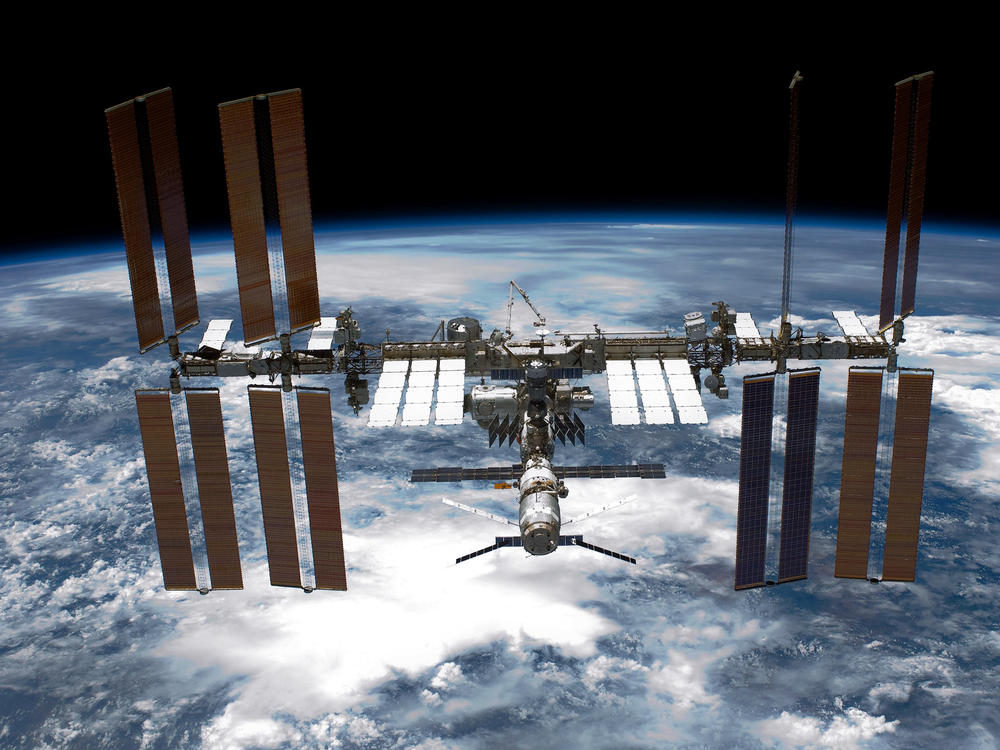GHSA 6A Boys Basketball Championships: Wheeler High School vs Newton High School starts at 7:30 p.m.
Section Branding
Header Content
A Russian missile creates enough space junk to pose risk to astronauts for years
Primary Content
The U.S. is condemning a "dangerous and irresponsible" test of a Russian anti-satellite missile that blasted a cloud of debris into Earth's orbit and forced astronauts aboard the International Space Station to briefly take shelter as a precaution. Russia denies that it put any spacecraft or astronauts in danger.
The test of the anti-satellite weapon, or ASAT, early Monday scattered hundreds of thousands of pieces into space, some 1,500 hundred of them big enough to track, State Department spokesperson Ned Price said during a news briefing on Monday.
"Earlier today, the Russian Federation recklessly conducted a destructive satellite test of a direct-ascent anti-satellite missile against one of its own satellites," Price said.
"This test will significantly increase the risk to astronauts and cosmonauts on the International Space Station, as well as to other human spaceflight activities," he said.
The current crew of the station includes four NASA astronauts, one astronaut from the European Space Agency and two Russian cosmonauts. They were ordered to shelter in the two spacecraft attached to the ISS that could return them home in an emergency — a Russian Soyuz capsule and the SpaceX Crew Dragon spacecraft that arrived at the station last week.
The crew spent about two hours in the capsules before emerging. Later, NASA astronaut Mark Vande Hei told mission control that it "was certainly a great way to bond as a crew, starting off our very first workday in space."
Russia's space agency, Roscosmos, tweeted that the threatening debris had "moved away from the ISS orbit" and that "[the] station is in the 'green zone.' "
The head of the U.S. Space Command, Army Gen. James Dickinson, said in a statement that Russia had "demonstrated a deliberate disregard for the security, safety, stability, and long-term sustainability of the space domain for all nations."
U.S. Space Command said its initial assessment is that "the debris will remain in orbit for years and potentially for decades, posing a significant risk to the crew on the International Space Station and other human spaceflight activities, as well as multiple countries' satellites."
NASA Administrator Bill Nelson, in his own statement, added that the test threatened even "the Chinese space station and the taikonauts on board."
Russia's Defense Ministry on Tuesday confirmed it had destroyed one of its own defunct satellites in the test, but called U.S. remarks "hypocritical."
"[The] U.S. knows for certain that the resulting fragments, in terms of test time and orbital parameters, did not and will not pose a threat to orbital stations, spacecraft and space activities," the ministry said, according to The Associated Press.
Russia isn't the first country to develop and test ASATs, which are designed to knock out enemy satellites. In 2007, China tested a weapon similar to the one fired by Russia on Monday, with similar results. The U.S. and India have also tested such weapons in space.
A Pentagon report last year described Beijing's ground-based ASAT capabilities as "operational" and said that "China probably intends to pursue additional ASAT weapons capable of destroying satellites up to geosynchronous Earth orbit."
According to the Union of Concerned Scientists, such tests "can produce tremendous amounts of orbital debris: the destruction of a single large satellite such as a U.S. spy satellite could by itself double the total amount of large debris currently in low earth orbit (LEO), where nearly half of current satellites reside," the group said, adding: "There are currently no international restrictions on the testing or use of military systems intended to destroy satellites."
Copyright 2021 NPR. To see more, visit https://www.npr.org.
Bottom Content

